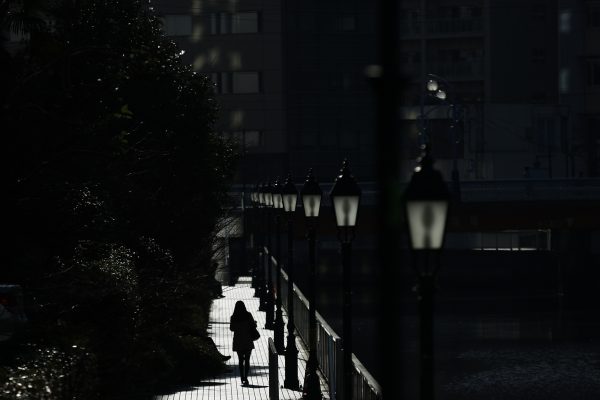In Japan, coal is making a stealthy comeback as contentious debates about the use of nuclear power and renewable energy capture the public’s attention.
Japan’s Prime Minister Shinzo Abe decisively announced a restart of all 43 nuclear reactors within three years in his 2013 New Year’s address. Given Abe’s career-long pro-nuclear stance, it was no surprise when his administration resolved to retain nuclear power as a baseload power source Basic Energy Plan. In the April 2015 Energy Mix 2030 document, the Abe administration adopted the specific numerical target of generating between 20 and 22 per cent of the electricity supply from nuclear reactors by 2030.
This target was predicated on two assumptions: that energy efficiency and savings measures will keep future energy demand at its current level, and that there will be an expansion of renewable energy sources.
The Abe government assumed that renewable energy would make up the 7–9 per cent reduction in nuclear power generation compared to 2010 levels, so that Japan could meet its Paris emissions reductions pledge of 26 per cent below 2013 levels.
Even these reduced nuclear power generation targets have been questioned. The Chairman of the Nuclear Regulation Authority (NRA), Tanaka Shun-ichi, promised that the NRA was doing everything in its power to undertake the safety review process in a swift manner, but noted that it simply could not be done within the three years Abe promised in his New Year’s address.
Indeed, out of the 43 nuclear reactors available for commercial use, only 12 have been deemed safe since the NRA began its safety screenings in 2013. Many reactors are bound to remain idle, which will result in electricity from nuclear power plants making up at most about 15 per cent of the electricity supply by 2030, rather than 20–22 per cent.
Abe’s rhetoric has moved from pro-nuclear to cautious upon realising that the numerical targets found in the Energy Mix 2030 document are unattainable and that safety problems in the nuclear industry remain. During a January 2016 discussion about Japan’s future electricity supply before the Budget Committee of Japan’s upper house, Abe acknowledged that the Energy Mix 2030 goal would not be possible unless all nuclear reactors are approved by the NRA and restarted. Abe added that his administration would certainly not restart nuclear reactors against the judgement of the NRA solely because the 20–22 per cent goal exists. This seemed tantamount to an admission that his original goal will not be achieved.
Already, the problems with these energy mix targets are starting to show. In 2015, nuclear power accounted for only 1 per cent of electricity production, meaning other energy sources are required to bridge the gap. Renewable energy generated 15 per cent of the total electricity in 2015, an increase of 5 per cent from 2010 levels. Power generation from natural gas, which produces half the greenhouse gas emissions of coal-based power generation, reached 44 per cent in 2015. This is 17 per cent more than the target found in the Energy Mix 2030 document.
Currently coal-fired thermal power plants generate the electricity to compensate for discontinued nuclear power plants that renewable energy and natural gas alone cannot produce. The share of coal in electricity generation reached 32 per cent in 2015. That is 6 per cent more than the 26 per cent envisaged in the Energy Mix 2030 document.
In order to meet Japan’s emissions reductions pledge, all discontinued nuclear power needs to be replaced with low emissions energy sources. But private companies are making substantial investments into expanding coal-fired thermal power plants that will exceed Japan’s current coal-based generation capacity. Both private and public sector agents are pushing for technology that would reduce pollution from coal-power plants and enhance carbon capture and storage. Yet substantial investments into these new capacities are setting Japan on a path of long-term coal reliance at the expense of failing to meet its emissions reductions targets.
Japan’s energy policy is at a crossroads. Either it can turn to coal to counter the losses in electricity generation that have resulted from shutting down nuclear power plants or it can move forward by pushing renewables and natural gas. Even if the potential for hydropower has been fully exploited, there is abundant renewable energy potential for geothermal, wind and biomass expansion.
To avoid a reliance on coal in the wake of the nuclear phase out, both the private and public sector in Japan will have to double down on its commitment to, and investment in, renewable energy.
Florentine Koppenborg is a Postdoctoral Fellow at the Graduate School of East Asian Studies, Free University of Berlin.


The NRA has not been as ‘cautious’ nor as thorough in restarting plants as Abe has claimed. One on southern Kyushu was approved for a restart by not allowing a number of communities within the evacuation zone to vote on it. This was done because these communities were opposed to this restart. Another on western Honshu was approved before adequate roadways had been built to allow for evacuation in the event of a disaster.
The last few sentences of this piece are essential: there are abundant sources of renewables that could be developed. Abe is too much captured by the nuclear power industry to do this, however.
A similar view is echoed by AT Kearney Japan where their recently published white paper Japan’s Power Sector and CO2 Pathways highlighted the risk of Japan’s nuclear shortfall and coal overbuild would result in CO2 overshooting Japan’s NDC target by 22% in 2030. Hence a balanced approach of capping coal, more gas, renewables and some offsets would be required if nuclear target is not achieved. I think the article rightly highlights that Japan is at a crossroad, and it has a window of opportunity to decide if the new coal plants should all get built.